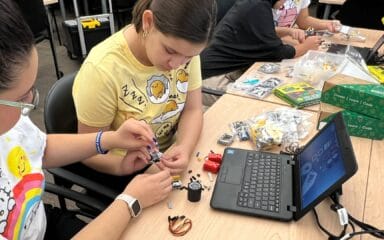Managing Change: A Parent’s Guide to Navigating Life’s Transitions

Life is full of transitions—some exciting, others challenging—and navigating those changes can feel overwhelming at any age. For parents, the task becomes even more complex when managing their own emotions while also helping their child understand what’s happening around them. Managing change requires patience, empathy, and honest communication, whether it’s a new job, a big move, a family shift, or an unexpected life event.
Although change is inevitable, how we prepare ourselves and our families can make all the difference. Creating supportive environments and fostering open dialogue, we help our children develop resilience and adaptability—tools they’ll carry into adulthood.
Why Managing Change Matters
Change—even when it’s positive—can stir up a range of emotions: anxiety, fear, excitement, sadness, or uncertainty. For children, these feelings are often intensified by a lack of control or understanding. Helping them process change in healthy ways provides short-term comfort and builds long-term emotional intelligence and problem-solving skills.
Common Life Changes That Impact Families
Transitions come in many forms, and each one presents its own set of challenges. Some of the most common life changes that families navigate together include:
- Starting a new school or educational program
- Moving to a new home or city
- Changes in family structure
- Death or illness in the family
- A new sibling or blended family
- Job loss or financial hardship
- Natural disasters or community crises
- Graduations, retirements, and other milestones
How to Support Your Child Through Change
Just like adults, children need time and tools to process and adjust. Here are some practical strategies for helping your child—and yourself—manage life’s changes with more ease and understanding:
1. Create a Safe Space for Conversations
Before starting a big conversation, find a quiet, comfortable space where your child feels safe and supported. Avoid busy or loud environments that might make them feel distracted or overwhelmed. Let them know this is a space where they can ask anything—and you’ll always listen.
2. Share Age-Appropriate Information
Children don’t need every detail to feel secure, but they deserve the truth. Be honest about what’s happening while keeping their age and maturity level in mind. You might say, “We’re moving to a new house because I got a new job,” instead of diving into complex adult concerns.
3. Acknowledge and Validate Their Emotions
Change can bring up big feelings, and it’s important to let your child know those emotions are normal. Say things like, “It’s okay to feel nervous,” or “I know this is a lot to take in.” When children feel seen and heard, they’re more likely to cope in healthy ways.
4. Stick to Routines When Possible
Routines create a sense of predictability and comfort during uncertain times. Even if everything else feels different, keeping consistent mealtimes, bedtime rituals, or weekend traditions can help ground your child and provide a sense of normalcy.
5. Focus on the Positives
While it’s important to acknowledge the challenges of change, it’s also helpful to highlight the positives. Moving? Talk about the new park nearby. Welcoming a new baby? Remind them of the special role they get to play as an older sibling.
6. Be a Calm and Reassuring Presence
Your emotional state sets the tone. Showing calm confidence—even when you’re nervous—helps your child feel secure. Let them know you’re figuring things out together and that you’re a team, no matter what.
7. Model Healthy Coping Strategies
Kids learn how to deal with change by watching the adults around them. Talk about how you’re feeling: “I’m a little worried about starting my new job, but I’m also excited to learn new things.” This shows them it’s okay to have mixed emotions and still move forward.
Extra Tools for Managing Transitions
Sometimes, extra support can make a big difference. Consider using the following tools:
- Books for kids about change: Titles that explain moving, divorce, or loss in gentle, age-appropriate ways
- Visual schedules: Great for younger kids to understand what to expect during a change
- Therapy or counseling: Support from a professional can be incredibly helpful for both kids and adults
- Journals or creative activities: Encourage your child to express their feelings through writing or drawing
Final Thoughts
Change is a part of life, but it doesn’t have to be scary. When families face change together—with honesty, empathy, and support—they emerge stronger and more connected. As you navigate life’s transitions, remember you don’t need all the answers. Just showing up patiently and willing to listen is more than enough.
To explore more parenting tips and resources from K12-powered online schools, visit K12.com.
Back to Blog


